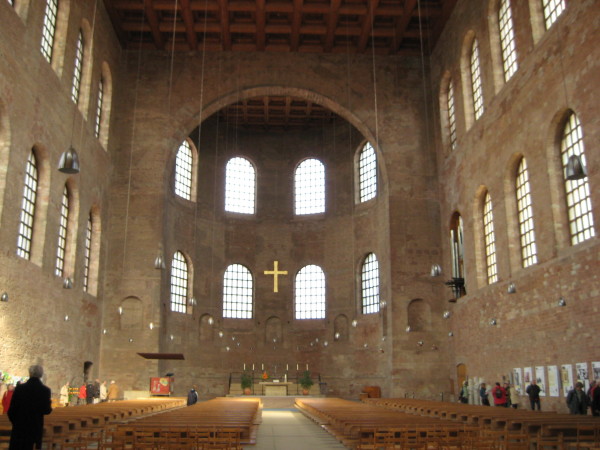Never heard of Trier? You probably are not alone. I have to admit, I wasn’t too familiar with it myself (if at all) before I started researching a trip to Germany. Despite that, it ended up being one of the highlights of my trip –possibly because it feels a lot more Italian than German. Which brings me to my favorite things about Trier:
1. History

There is a reason Trier feels like it belongs more in Italy than in western Germany. Trier was part of the Roman Empire as early as 30 B.C. , was the capital of a Roman province and was even the home of the Roman Emperor Constantine (he built a basilica there in the 4th century that still stands today). That history is evident in several of my other favorite things I list below. Trier has also been in high demand over the years, having been seized by the Franks in the 5th century and then invaded by France in the 17th and 18th centuries before eventually becoming part of Prussia and then modern-day Germany. Fun fact: It is also the birthplace of Karl Marx.
2. The Moselle River

I’m from Minnesota, the land of 10,000 lakes. I picked my college based on the fact that it was on a river. So it should come as no surprise that one of the things I love about Trier is the Moselle River. Not only is the river beautiful (especially in late October when the leaves are changing colors!), it boasts the oldest bridge north of the Alps in the Römerbrücke, built in the 2nd century. It was also solitary and peaceful – I barely saw another soul as I walked along a river path late in the afternoon.
3. Porta Nigra

If you arrive by train and head into the city, one of the first sites you will see is the enormous Porta Nigra – literally, the “black gate.” It is the best preserved Roman city gate north of the Alps and still serves as a gateway to the central, cobblestone area of Trier. Climbing up the Porta Nigra provides panoramic views of the city and countryside. There is also an interesting story about a monk named Simeon that lived in the gate, which prevented it from being destroyed. Another fun fact: an image of the Porta Nigra is on the logo of New Trier High School in Winnetka, Illinois (full disclosure: I just learned that while doing some research for this post).
4. Imperial Baths


I love these for three reasons. First, I am just a sucker for Roman ruins. Being in the presence of such ancient structures just feels magical to me. Second, there was not another tourist in sight; I was completely alone for the hour or more that I wandered through the Baths. Third, they totally creeped me out. Seriously. The Baths include numerous underground tunnels, lit only by any natural light that happens to seep through. Being completely alone at the site and walking through the tunnels was chilling, even in the middle of the morning. But that’s part of the fun, right?
5. Trier Cathedral

Also known as the Dom St. Peter and the oldest church in Germany, the cathedral dates back to the year 326 (Emperor Constantine’s time). Combining Romanesque, Gothic and Baroque elements, it has an interesting interior, but the cathedral’s treasury is really the highlight. The treasury displays some of the oldest religious relics in Europe, many of which are said to have been brought to Trier in the 4th century by the Empress Helena. For me, the most impressive were the Portable Altar of St. Andrew, which enshrines the sole of St. Andrew the Apostle’s sandal and a series of medieval books covered in gold and jewels.
Have you been to Trier? What were your highlights?
